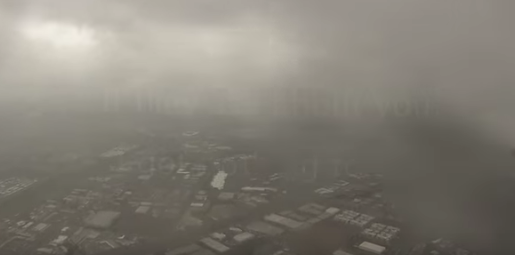 Next month I will be taking my Instrument Rating checkride! I am very excited, not because I have any desire to fly straight into some big puffy clouds, but because it is an important step in my progress of being a more experienced and qualified pilot. I’ve finished two big hurdles already, I have gotten my 50 hours cross country PIC time, including a few solo cross country flights, and I’ve passed the FAA written exam. I’m also about half way through the commercial ground school. I was planning on taking that written exam before the Instrument checkered, but I’m not sure if that will happen yet. In any event, I will be studying aviation every night.
Next month I will be taking my Instrument Rating checkride! I am very excited, not because I have any desire to fly straight into some big puffy clouds, but because it is an important step in my progress of being a more experienced and qualified pilot. I’ve finished two big hurdles already, I have gotten my 50 hours cross country PIC time, including a few solo cross country flights, and I’ve passed the FAA written exam. I’m also about half way through the commercial ground school. I was planning on taking that written exam before the Instrument checkered, but I’m not sure if that will happen yet. In any event, I will be studying aviation every night.
One question that I anticipate coming up on the checkered is “How do you know if you’ll need to list an alternate airport on your IFR flight plan?” And no, it’s not acceptable to just say, “I’ll list one anyway, just to be safe.” The examiner is going to give me a weather forecast at an airport and I’ll have to tell him whether or not I need an alternate. I will refer to the 1-2-3 rule of IFR flying. It’s pretty simple.
From ONE hour before to ONE hour after your planned ETA at the destination airport, the forecast has to be at least 2,000 foot ceiling and 3 mile visibilities. If those weather minimums are met, than no alternate airport is required. But if the ceiling or visibility is less than TWO thousand feet and THREE miles, then you need an alternate. And there are some rules about your alternate, depending on the available instrument approaches.
If an IAP is published for that airport, you must be able to land at the alternate minimums specified in the procedure, or if none are specified:
(1) for a precision approach procedure: ceiling 600 feet and visibility 2 statue miles.
(2) for a non precision approach procedure, ceiling 800 feet and visibility 2 statute miles.
(3) If there is no instrument approach procedure published for your alternate airport, the ceiling and visibility minimums are those allowing descent from the MEA, approach, and landing, under basic VFR. In class Echo airspace below 10,000 feet MSL, basic VFR is 3 statute miles visibility and cloud clearance of 500 feet below, 1,000 feet above, and 2,000 feet horizontal.


Leave a Reply